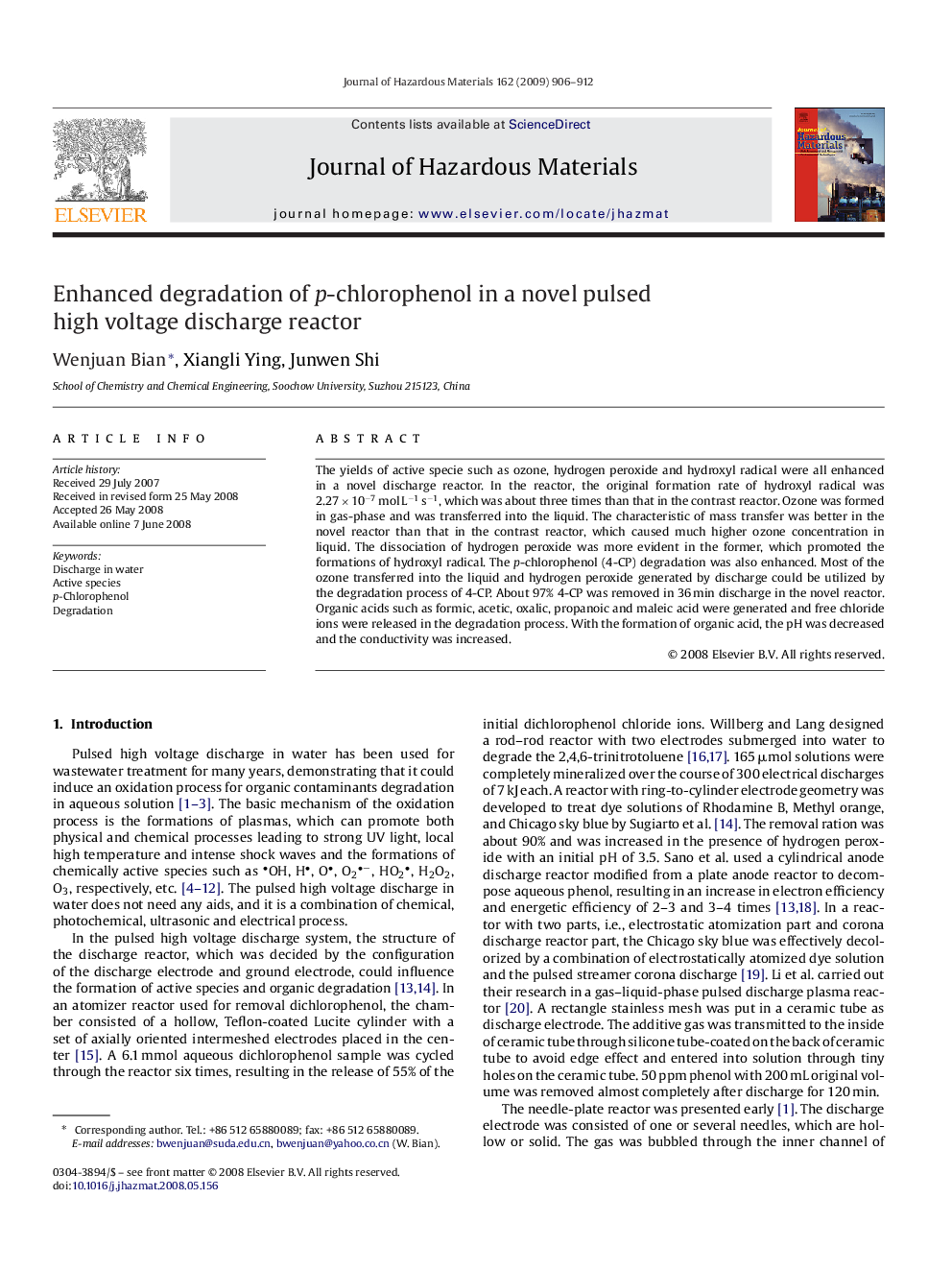| Article ID | Journal | Published Year | Pages | File Type |
|---|---|---|---|---|
| 582380 | Journal of Hazardous Materials | 2009 | 7 Pages |
Abstract
The yields of active specie such as ozone, hydrogen peroxide and hydroxyl radical were all enhanced in a novel discharge reactor. In the reactor, the original formation rate of hydroxyl radical was 2.27 Ã 10â7 mol Lâ1 sâ1, which was about three times than that in the contrast reactor. Ozone was formed in gas-phase and was transferred into the liquid. The characteristic of mass transfer was better in the novel reactor than that in the contrast reactor, which caused much higher ozone concentration in liquid. The dissociation of hydrogen peroxide was more evident in the former, which promoted the formations of hydroxyl radical. The p-chlorophenol (4-CP) degradation was also enhanced. Most of the ozone transferred into the liquid and hydrogen peroxide generated by discharge could be utilized by the degradation process of 4-CP. About 97% 4-CP was removed in 36 min discharge in the novel reactor. Organic acids such as formic, acetic, oxalic, propanoic and maleic acid were generated and free chloride ions were released in the degradation process. With the formation of organic acid, the pH was decreased and the conductivity was increased.
Related Topics
Physical Sciences and Engineering
Chemical Engineering
Chemical Health and Safety
Authors
Wenjuan Bian, Xiangli Ying, Junwen Shi,
